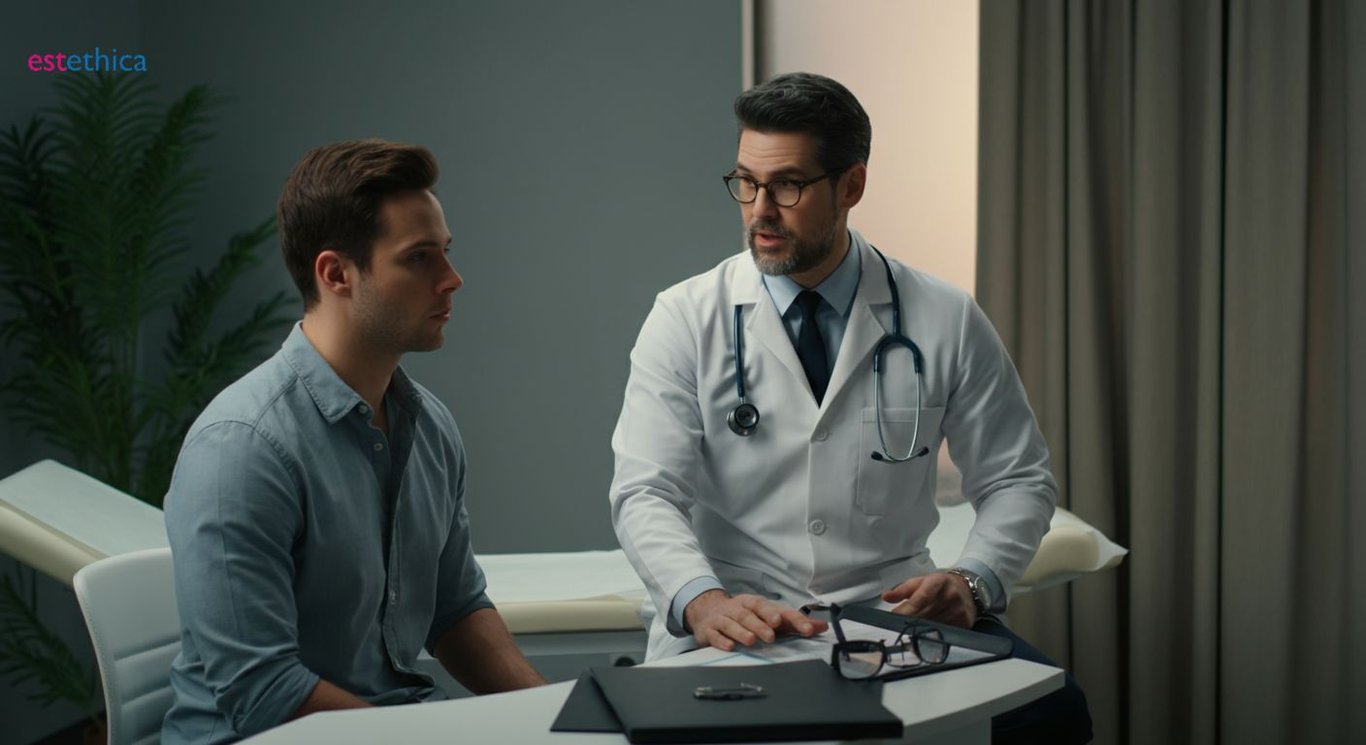Transformative Gynecomastia Surgery Insights
Gynecomastia surgery offers transformative results. Understand the condition, explore treatments, and choose the best surgical path forward.
Gynecomastia, often termed as 'man boobs', is a condition characterized by the enlargement of breast tissue in males. While it primarily affects puberty-aged boys due to hormonal changes, adult men are not exempt from its grasp. Addressing gynecomastia involves understanding its root causes, available treatments, and finding the right healthcare expert. In this article, we delve into the depths of gynecomastia, exploring both surgical and non-surgical interventions, and providing insights into choosing the best gynecomastia surgeon near you.
Understanding the Root Causes of Gynecomastia
Factors Contributing to Hormonal Imbalance
Gynecomastia, often referred to as "man boobs," is primarily caused by hormonal imbalances. These imbalances can result from various factors, including lifestyle choices, medications, and underlying health conditions. For instance, excessive alcohol consumption can lead to liver damage, which in turn affects hormone levels, potentially causing gynecomastia. Additionally, certain medications, such as those used for treating prostate conditions or heart diseases, can disrupt hormonal balance, leading to enlarged male breasts.
Common Health Conditions Leading to Gynecomastia
- Thyroid Disorders: Hyperthyroidism can increase estrogen levels, contributing to gynecomastia.
- Liver Disease: Conditions like cirrhosis can alter hormone metabolism, leading to breast enlargement.
- Kidney Failure: Dialysis patients often experience hormonal changes that may result in gynecomastia.
Understanding these health conditions is crucial for identifying the root cause of gynecomastia in individuals. Each condition requires specific medical attention to address the hormonal imbalance effectively.
Steps to Diagnose Gynecomastia
- Medical History Review: Doctors assess medication use and lifestyle factors.
- Physical Examination: A thorough check to distinguish between gynecomastia and fat accumulation.
- Hormonal Tests: Blood tests to evaluate testosterone and estrogen levels.
These diagnostic steps help in determining the appropriate gynecomastia treatment, whether it involves lifestyle changes, medication adjustments, or surgical intervention.

Exploring Non-Surgical Gynecomastia Solutions
Natural Approaches to Managing Gynecomastia
Non-surgical methods for gynecomastia focus on treating the underlying causes. Lifestyle changes like weight loss and exercise can be beneficial, especially if the gynecomastia is a result of high body fat percentage rather than true glandular enlargement. For hormone-related gynecomastia, medications that balance hormone levels may be prescribed, helping reduce the breast tissue over time.
Benefits of Non-Surgical Gynecomastia Treatment
- Less invasive than surgery, reducing recovery time and potential complications.
- Focuses on addressing root causes, promoting long-term health benefits.
- Can be tailored to individual needs, enhancing effectiveness.
Regular check-ups and consultations with healthcare providers can also help manage and monitor how to treat gynecomastia naturally. Although non-surgical methods may not provide immediate results compared to surgery, they are less invasive and can serve as a step forward in managing the condition.
Steps to Implement Non-Surgical Solutions
- Consult a healthcare provider to identify the underlying cause of gynecomastia.
- Adopt a balanced diet and regular exercise routine to reduce body fat.
- Consider hormone therapy if recommended by a medical professional.
These steps can help individuals manage gynecomastia effectively without resorting to surgical interventions. By focusing on lifestyle and hormonal balance, patients can achieve a healthier body composition and potentially reduce the appearance of "man boobs" over time.

Evaluating the Safety of Gynecomastia Surgery
Understanding the Surgical Process and Safety Measures
Gynecomastia surgery, often sought for reducing "man boobs," involves either liposuction or tissue excision. The procedure is generally safe, especially when performed by a board-certified surgeon. These professionals follow stringent safety protocols to minimize risks, such as anesthesia complications or infections. For instance, pre-operative assessments ensure patients are fit for surgery, reducing potential complications.
Key Safety Features of Gynecomastia Surgery
- Performed by experienced, board-certified surgeons to ensure high standards.
- Utilizes advanced surgical techniques to minimize tissue trauma.
- Includes comprehensive post-operative care to monitor recovery.
These safety measures are crucial in achieving successful outcomes and reducing the appearance of enlarged male breasts. Patients are encouraged to follow post-surgery guidelines closely to enhance recovery and satisfaction.
Steps to Ensure a Safe Gynecomastia Surgery
- Choose a qualified, board-certified plastic surgeon with a proven track record.
- Undergo a thorough pre-operative evaluation to assess health status.
- Adhere to post-operative care instructions for optimal healing.
By following these steps, patients can significantly reduce risks and improve the overall success of their gynecomastia surgery. This approach not only addresses the physical aspect but also enhances confidence and quality of life.

Choosing the Best Gynecomastia Surgeon Near You
Evaluating Surgeon Credentials and Experience
When seeking the best gynecomastia surgeon near you, it's essential to evaluate their credentials and experience. Look for board certification in plastic surgery, which ensures the surgeon has met rigorous standards. Additionally, consider their specific experience in male breast reduction procedures. A surgeon with a robust portfolio of gynecomastia surgery before and after photos can provide insight into their skill and aesthetic judgment. For instance, a surgeon who has performed numerous successful surgeries is likely to have refined techniques that minimize scarring and enhance results.
Key Considerations for Choosing a Surgeon
- Board certification in plastic surgery for assurance of quality and safety.
- Extensive experience in male breast reduction to ensure specialized care.
- Positive patient testimonials and a portfolio of successful outcomes.
These factors are crucial in selecting a surgeon who can effectively address gynecomastia, often referred to as "man boobs," and achieve the desired aesthetic results.
Steps to Prepare for a Consultation
- Research potential surgeons and compile a list of qualified candidates.
- Schedule consultations to discuss your goals and expectations.
- Prepare questions about the surgeon's experience, techniques, and recovery process.
By following these steps, you can ensure a productive consultation, aligning your expectations with the surgeon's capabilities. This preparation helps in building a rapport with the surgeon, easing any pre-surgical nerves and contributing to a smoother recovery process.
Additional Guidance on Gynecomastia Surgery Costs
Factors Influencing the Cost of Gynecomastia Surgery
When considering gynecomastia surgery, various factors can influence the overall cost. These include the geographical location of the clinic, the surgeon's expertise, and the complexity of the procedure. For instance, a highly experienced surgeon in a metropolitan area like New York may charge more due to their reputation and demand. Additionally, the type of surgical technique used, such as liposuction or tissue excision, can also affect pricing. Understanding these factors can help individuals make informed decisions when planning for surgery.
Key Considerations for Budgeting Gynecomastia Surgery
- Research local and national options to find competitive pricing.
- Consider the surgeon's experience and success rate in gynecomastia procedures.
- Evaluate the comprehensive care package, including post-operative support.
These considerations are crucial for ensuring that patients receive quality care without compromising on the outcome. By evaluating these aspects, individuals can better prepare financially and choose a surgeon who aligns with their expectations and budget.
Steps to Obtain a Detailed Surgical Quote
- Schedule consultations with multiple surgeons to discuss your case.
- Request a comprehensive breakdown of all associated costs.
- Compare quotes to identify the best value for your specific needs.
By following these steps, patients can gain a clearer understanding of the financial commitment involved in gynecomastia surgery. This proactive approach helps in making an informed decision, ensuring that the chosen surgeon and procedure meet both medical and financial expectations.
Comprehensive Gynecomastia Treatment Solutions
Excellence in Patient-Centric Gynecomastia Care
Frequently Asked Questions
What are the main causes of gynecomastia in males?
How can gynecomastia be treated without surgery?
What safety measures are involved in gynecomastia surgery?
How do I choose the best gynecomastia surgeon near me?
What factors influence the cost of gynecomastia surgery?
Discover the path to 'Healthy Beauty' with estethica's expert care. Contact us today for a free consultation and experience the transformation!
📞 Call Now for Your Free Consultation